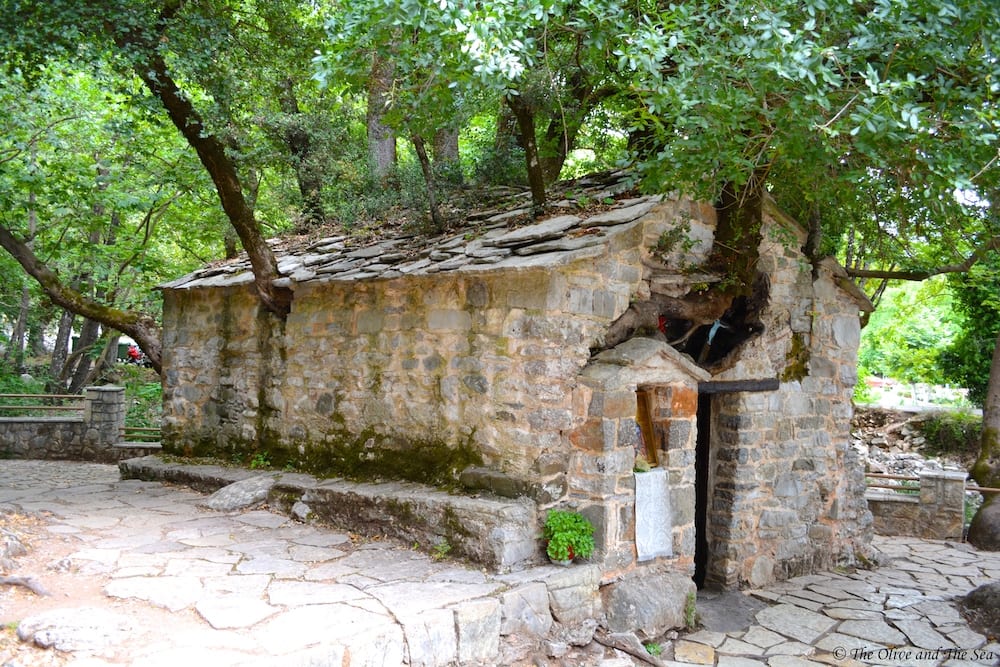The Church of St. Theodora of Vasta

Nestled in the Peloponnesian mountainside village of Vastas one will find the small church of Saint Theodora. The road to get there is narrow and windy, testing nerves at every turn. As the GPS indicator inched closer to our destination, anticipation grew.
Built in the twelfth century, this church is no ordinary site. With seventeen trees growing atop its roof without any visible root system, the church is considered a “living miracle”. As we made our final turn, I wondered. From parted seas to walking on water, many are the miraculous stories that shaped my upbringing. But they remain stories, accounts from the past that call upon our faith to believe. Would this church, a tangible structure available for personal scrutiny, prove different?
The story begins in the tenth century when Theodora of Vasta, a young woman, disguised herself as a male soldier to fight against bandits raiding her village. As she laid dying from injuries sustained in battle, she pleaded with God to “let her body become a church, her hair trees, and her blood a river”.
Her story is sometimes confused with that of Theodora of Alexandria, a pious woman who lived during the same period and joined a men’s monastery as “Theodoros”. In both instances, the young women passed as men, died martyrs, and shared a common plea with God.

by Georgios E. Siipis the Cypriot
Following Saint Theodora’s death, the village of Vastas built a church in her name. It is believed that sometime thereafter, the river rerouted to flow beneath it, and trees began to grow.

As unusual as the sight of rooftop trees may be, it is the apparent lack of any root system that truly boggles the mind. Viewed from the exterior, large trunks emerge from the walls and roof. Common sense tells us that the church’s interior should be overtaken by nature, yet it remains intact.

Adorned with icons and a small altar, the sight defies understanding. For centuries, scientists were unable to explain this unique phenomenon. Finally, in 2003 a team of researches from the University of Patras examined the church with ultrasound confirming the existence of a root system within the wall’s small gaps. Although their research did provide answers, the team continued to express bewilderment at the structure’s ability to withstand the tremendous pressure applied by the trees and roots.
As we traveled the windy road back home and in the months that followed, I reflected on our visit. Was Saint Theodora’s the work of divine intervention or nature’s playful way of defying our understanding of botany? Ultimately, the church’s beauty is not in the “how” but rather the “why”. For hundreds of years, a little church has inexplicably carried the weight of 17 trees. A beautiful reminder that the world as we know it exists against all odds. That when what lies ahead seems insurmountable, we must believe in the possible.



